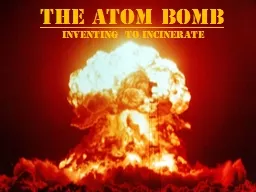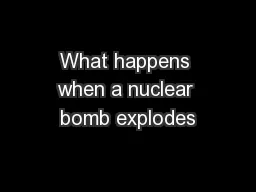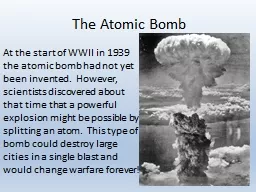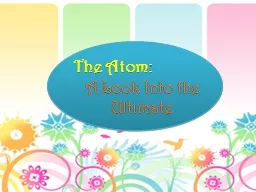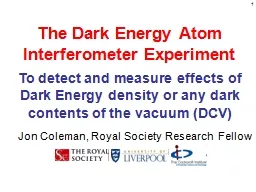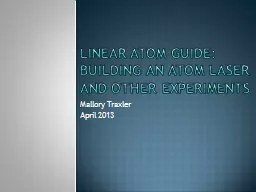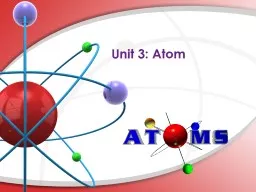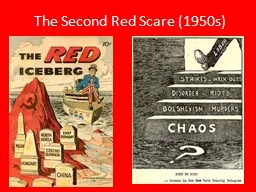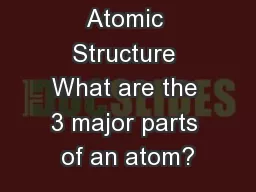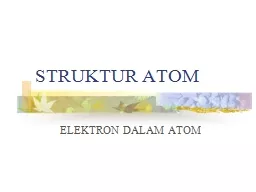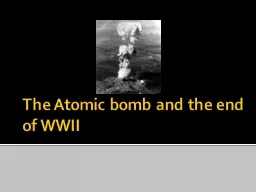PPT-The Atom Bomb
Author : olivia-moreira | Published Date : 2015-12-06
Inventing to Incinerate The Debate By spring 1945 it was clear that Japan was not going to surrender to the Allies An invasion was being planned by the Allies to
Presentation Embed Code
Download Presentation
Download Presentation The PPT/PDF document "The Atom Bomb" is the property of its rightful owner. Permission is granted to download and print the materials on this website for personal, non-commercial use only, and to display it on your personal computer provided you do not modify the materials and that you retain all copyright notices contained in the materials. By downloading content from our website, you accept the terms of this agreement.
The Atom Bomb: Transcript
Download Rules Of Document
"The Atom Bomb"The content belongs to its owner. You may download and print it for personal use, without modification, and keep all copyright notices. By downloading, you agree to these terms.
Related Documents

